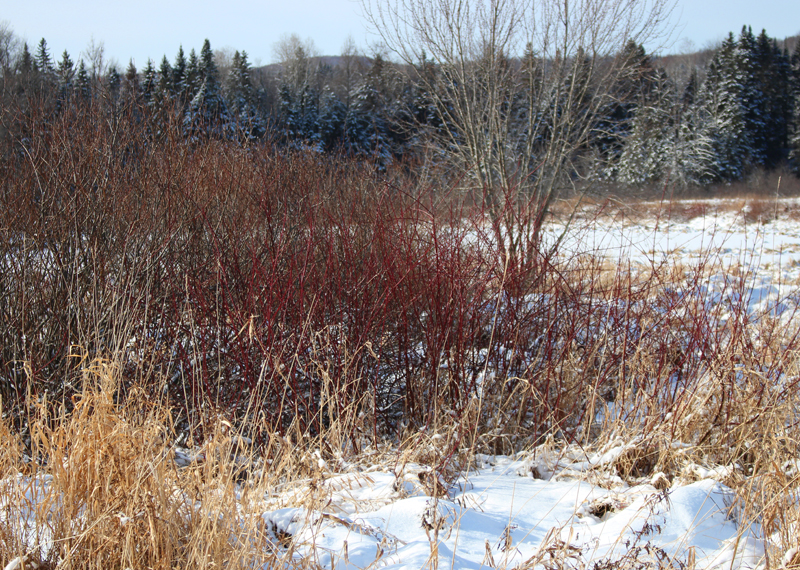A New Season
I drive back up to the Johnson farm right after our first December snow.
Our Vermont landscape is completely transformed five times a year (four seasons plus March mud), and I am eager to see how the fields and wetlands I painted through summer and autumn look, now that winter had really arrived.
Driving down farm tracks isn't an option in the snow, so I park my car up by the barn.
The crew is in the warm milk house getting ready for the milk truck to arrive, and the calves are snug in their hutches.
The temperature is just 5 degrees, but the sun is shining, and helping me forget how cold it is.
Ita, Roscoe and I walk down quiet Route 102, and take the first farm track back towards the Connecticut River. Soon we are standing where I painted many times this summer and fall.
But how different the cornfield, trees and hills look now...
The lush greens, violets and blues I painted in July have all disappeared, replaced by an austere palette of white, brown and yellow ochre.
The snow creates a clear demarcation of where the protected wetlands meet crop land, where human uses end, and nature's parcel begins.
the farmland is strictly geometric, sculpted by machines to be flat, or furrowed into rows.
But wetlands are irregular in shape, with curves and textures that follow no strict pattern.
Now I notice plants along the verge of the oxbow, silhouetted against white snow.
I missed them a few months ago, when they were camouflaged by the green-on-green of summer.
Seed heads create a delicate foreground to the broad white plane of the frozen oxbow.
But the wetlands are not just a white world.
Reds, blues and yellows are here, too.
Not to mention blue mountain against orange sky...
Trees stand in a straight line, and tell me the stream bed is beyond swampy grass.
It's frozen now, so I can walk across, and take a look for myself.
Then down to the Connecticut River, where the water is not solid enough for even the dogs to risk a walk across.
Paws and feet are cold, and it's time to head home.
As I trudge back to the farm, I think about all I've have seen today.
It's been too cold paint, but walking and just looking is productive, too. I have some new ideas for the composition of my large "Winter" painting, which I'll work on in my studio as soon as I can.
We head back down the road in late afternoon light.
Roscoe and Ita sleep in the back seat, tuckered out from all they've seen, and smelled, at the Johnson Farm.
We'll be back again in the very early spring, when the snow melts, and the wetlands wake.
Meanwhile back in my studio, my day out on the land inspires a new painting.
"Corn Field in Snow", 20" x 20", oil on linen panel




